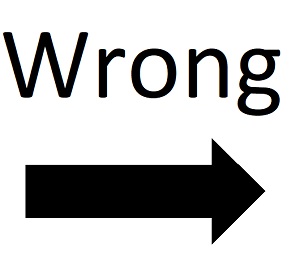Mistakes With NUA

Photo credit: jb
In another article on this site we discussed the concept of Net Unrealized Appreciation, or NUA for short. It’s a complicated affair, fraught with potential mistakes – several of the most important mistakes with NUA are listed below.
Mistakes With NUA
Moving too quickly – if you roll over your funds from the Qualified Retirement Plan (QRP) without first checking to see if there can be a benefit from the NUA treatment of company stock in the QRP, you’ve lost the chance to do so. Always check for NUA possibility within the QRP before making any rollover moves.
Not moving quickly (completely) enough – if you have determined that NUA treatment can benefit your situation, you must move ALL of the funds from the QRP within the same taxable year. If you moved your NUA stock out first and planned to rollover the rest of the account into an IRA or other employer plan, you must follow through within the tax year. Delaying even one day beyond the tax year end will break the NUA option and cause the distributed stock to be fully taxable.
Taking RMDs or other distributions in an earlier year – if you retired in an earlier year, and began taking Required Minimum Distributions (RMDs), once that tax year ends and you have not taken your Lump Sum Distribution to enact the NUA option, you no longer have the NUA option available to you. This is due to the fact that the NUA option is available ONLY after a triggering event, and the entire balance must be withdrawn in a single tax year. If another triggering event were to occur – such as disability or death – then the NUA treatment could still be available.

Photo credit: jb
Selling out of NUA-potential stock in the QRP – if you have significant holdings of your company’s stock in your QRP, chances are at some point you’ll get nervous about holding too much stock in a single company. Obviously, you don’t want to overexpose yourself to a volatile stock – but it may not make sense to sell all the stock while it’s still in the employer plan, either. If the stock has appreciated over a significant period of time, you might want to maintain a position simply to take advantage of the NUA treatment.
On the other hand, if you’re concerned that the stock is going to drop like a rock, (remember Enron? Worldcomm? CitiGroup? Countrywide?) you should ignore the concept of NUA altogether. You shouldn’t let the tax “tail” wag the financial responsibility “dog”. Besides, if the stock drops there might not be any appreciation to apply the NUA treatment to anyhow.
Not understanding NUA – if you don’t understand it completely, your chances of getting it right are low. This is a very strict set of rules (aren’t they all though?) and simple moves in the wrong direction can break the option altogether, potentially causing a major tax hit.
It’s also important for your heirs to understand NUA – or make sure that they will work with your NUA-savvy advisor before they make any moves. One matter that might trip up your heirs: NUA-treated stock does not receive a step-up in valuation upon inheritance. It retains the original basis when distributed.
The post Mistakes With NUA appeared first on Getting Your Financial Ducks In A Row.
source http://feedproxy.google.com/~r/GettingYourFinancialDucksInARow/~3/zLiqgDGBy28/
Comments
Post a Comment